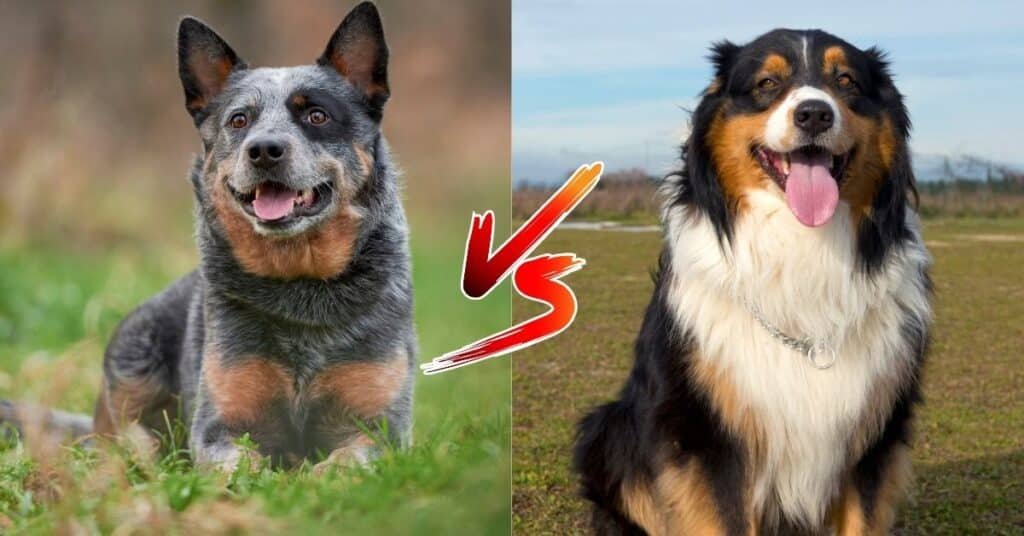Dogs have been man’s companions for centuries, and their diverse breeds cater to a myriad of preferences. Two breeds that often capture the attention of dog enthusiasts are the Dalmatian and the Pointer. Both are distinct in appearance, temperament, and purpose, making them intriguing subjects for comparison. In this comprehensive guide, we’ll delve into everything you need to know about the Dalmatian vs Pointer comparison.
Dalmatian vs Pointer comparison
Dalmatian vs Pointer: History and Origins
The Dalmatian, known for its distinctive black or liver-spotted coat, has a rich history that traces back to ancient times. Believed to have originated in the region of Dalmatia along the Adriatic Sea, these dogs were initially employed as carriage dogs, trotting alongside horse-drawn vehicles to guard them and provide company.
Dalmatians gained popularity in the 18th century in England, where they became associated with firehouses due to their agility and energy, often serving as carriage dogs for fire brigades. Their unique appearance and versatile skills have made them iconic figures in popular culture, notably in the Disney film “101 Dalmatians.”
The Pointer, distinguished by its sleek and athletic build, has a history deeply rooted in hunting and pointing game. Originating in England in the 17th century, Pointers were selectively bred for their keen sense of smell, endurance, and the ability to stand motionless to indicate the presence of game to hunters.
The breed’s development involved crossing various dogs, including the Greyhound, Foxhound, and Bloodhound, to enhance specific traits. Pointers gained prominence in the 19th century, particularly in field trials, showcasing their hunting prowess. Today, they remain valued as both skilled hunting companions and affectionate family pets, appreciated for their intelligence and friendly demeanor.
Dalmatian vs Pointer: Appearance and characteristic
Dalmatians are easily recognizable for their distinct black or liver-spotted coat, which is short and dense. Their elegant build is well-balanced, exhibiting a medium-sized, muscular frame. Dalmatians have a distinctive head with a moderately long muzzle, expressive eyes that are either brown or blue, and ears that are set high and carried close to the head.

Their friendly and outgoing nature, combined with an alert and intelligent demeanor, makes them not only visually striking but also engaging companions. Dalmatians typically stand out for their unique coat pattern, and their charming personality further adds to their appeal.
Pointers boast a sleek and athletic appearance, conveying strength, speed, and agility. They have a well-defined, muscular build with a deep chest and a straight back. The coat of a Pointer is short, dense, and smooth, providing a glossy sheen. Their most distinctive feature is the noble head, which is finely chiseled and adorned with expressive eyes and high-set ears.
Pointers are known for their keen sense of smell and exceptional pointing ability, a characteristic pose where they stand still and extend a foreleg in the direction of game. This breed is often characterized by a friendly and affectionate temperament, making them not only exceptional hunting companions but also cherished family pets.
Dalmatian vs Pointer: Temperament
Dalmatians and Pointers, while distinct breeds, share some commonalities in temperament. Dalmatians are known for their outgoing and energetic nature. They are often described as playful, friendly, and full of enthusiasm. Dalmatians thrive on social interaction and are generally good with children, making them a suitable family pet. However, their high energy levels require regular exercise and mental stimulation to prevent boredom and potential behavioral issues.
Pointers exhibit a similarly energetic temperament, but their focus is often directed towards more specific activities, such as hunting and retrieving. Pointers are renowned for their intelligence and trainability, making them excellent working dogs.
They are typically affectionate with their families and can be good with children, provided they receive the necessary training and socialization. Pointers’ natural instincts may lead to a strong prey drive, so early training is crucial to ensure they coexist harmoniously with other pets.
Dalmatian vs Pointer: Health
Dalmatians and Pointers are generally robust and healthy breeds, but they can be prone to certain health issues that prospective owners should be aware of. Dalmatians are known for their susceptibility to urinary stones, a condition attributed to their unique urinary system.
Owners should ensure they provide a well-balanced diet and proper hydration to minimize the risk of stone formation. Additionally, Dalmatians may be predisposed to deafness, with a higher incidence of this condition in individuals with a predominantly white coat.
Pointers are generally considered a healthy breed with a life expectancy of around 12 to 15 years. However, like many larger breeds, they can be prone to hip dysplasia, an orthopedic condition that may impact their mobility. Responsible breeding practices that screen for genetic conditions can help mitigate the risk of these health concerns in both Dalmatians and Pointers.
Dalmatian vs Pointer: Trainability
Dalmatians and Pointers are both breeds known for their intelligence and trainability, but they may exhibit differences in their learning styles and response to training methods. Dalmatians are generally intelligent dogs with a strong desire to please their owners.
However, they can be independent and stubborn at times, requiring a consistent and patient approach to training. Positive reinforcement techniques, such as treats and praise, tend to work well with Dalmatians, as they respond positively to rewards.
On the other hand, Pointers are also highly trainable and have a reputation for being eager to learn and please their owners. They are often quick learners and can pick up commands with relative ease. Pointers may respond well to positive reinforcement, but it’s important to keep training sessions engaging and varied to prevent boredom, as they can become distracted easily.
Dalmatian vs Pointer comparison: Bark
Dalmatians are known for their distinctive black or liver-colored spots on a crisp white coat. When it comes to barking, Dalmatians are generally moderate in their vocalization. They are not excessively barky but can become vocal if they are bored or sense something unusual in their surroundings. Dalmatians are alert and will bark to alert their owners to potential threats, making them good watchdogs.
On the other hand, Pointers, such as the English Pointer, are renowned for their athleticism and keen sense of smell. In terms of barking, Pointers are typically moderate barkers as well. They are not known for unnecessary or excessive vocalization, making them well-suited for families and residential environments.

Pointers may bark to signal excitement, but their overall bark frequency is generally lower compared to some other breeds. Proper training and mental stimulation are essential to maintain a well-behaved and quiet Pointer.
Dalmatian vs Pointer comparison: Adaptability
Dalmatians and Pointers both exhibit a high level of adaptability, but they do so in distinct ways. Dalmatians are renowned for their versatility in living environments. They can adapt well to urban apartments or spacious suburban homes, making them suitable for a variety of living situations.
Their friendly and outgoing nature also makes them adaptable to different social settings, making them great family pets. However, it’s essential to note that Dalmatians are known for their high energy levels, and regular exercise is crucial to keep them happy and well-adjusted.
On the other hand, Pointers showcase adaptability in the context of their role as hunting dogs. These dogs are highly skilled and versatile in various hunting environments, ranging from dense forests to open fields. Their athleticism and endurance allow them to adapt to different terrains, making them valuable companions for avid hunters.
While Pointers can also be loving family pets, their adaptability is often most evident in their performance during outdoor activities and sports. Regular mental and physical stimulation is key to ensuring a Pointer remains content and adaptable to different pursuits.
Dalmatian vs Pointer comparison: Exercise
Dalmatians and Pointers are both energetic and athletic dog breeds, known for their stamina and agility. Dalmatians, famously recognized for their distinctive black or liver-colored spots on a white coat, are often associated with firehouses and historical carriage dogs.
When it comes to exercise, Dalmatians require regular physical activity to keep them happy and healthy. Their high energy levels make them well-suited for activities like jogging, running, and agility training. Engaging in interactive play sessions and providing them with mental stimulation through puzzle toys can also help meet their exercise needs.
On the other hand, Pointers, known for their sleek and muscular build, are skilled hunting dogs with a keen sense of smell and remarkable speed. Exercise is crucial for Pointers to channel their energy and prevent boredom. They excel in activities such as fetch, flyball, and various forms of canine sports.
Due to their hunting background, Pointers enjoy exploring outdoor environments and benefit from off-leash play in secure areas where they can run freely. Regular walks and vigorous play sessions are essential to keep Pointers physically fit and mentally stimulated.
Dalmatian vs Pointer comparison: Nutrition
Dalmatians are known for their unique dietary requirements, primarily related to their predisposition to urinary stones. These dogs have a genetic predisposition to forming urate stones, and their diet should be tailored to prevent the accumulation of purines, which contribute to stone formation.
A low-purine diet, along with proper hydration, is crucial for Dalmatians to maintain urinary tract health. Additionally, because Dalmatians are prone to obesity, portion control and regular exercise are essential elements of their nutritional management.
On the other hand, Pointers are generally more adaptable in terms of diet, with no specific breed-related predispositions like Dalmatians. However, their energetic and active nature requires a balanced diet that provides the necessary nutrients to support their physical activity and maintain a healthy weight. Proteins, fats, and carbohydrates should be appropriately balanced to meet the energy demands of Pointers. Regular meals and portion control are also important to prevent overeating, especially as Pointers may be prone to obesity if not properly managed.
Dalmatian vs Pointer: Grooming
Dalmatians have a short, dense coat with distinctive black or liver spots. Dalmatians are moderate shedders and require regular grooming to control shedding and keep their coat healthy. Regular brushing, at least once or twice a week, helps remove loose hair and reduce shedding. Dalmatians are generally clean dogs with a short coat that doesn’t trap a lot of dirt. They don’t require frequent baths, and over-bathing can strip their coat of natural oils.
Pointers have a short, dense coat that lies close to the body. Pointers are also moderate shedders, and their grooming needs are relatively low. Regular brushing helps to remove loose hair and keep the coat in good condition. A once-a-week brushing session is usually sufficient. Like Dalmatians, Pointers do not require frequent baths. They have a natural, easy-to-maintain coat that doesn’t accumulate a lot of dirt. Baths can be given as needed, such as when they get particularly dirty or develop a noticeable odor.
Dalmatian vs Pointer: Speed
Dalmatians are a distinct breed known for their unique coat pattern of black or liver spots on a white background. They are medium to large-sized dogs that were historically used as carriage dogs and firehouse mascots. Dalmatians are agile and have a good amount of stamina, but they are not typically known for exceptional speed. They are more renowned for their endurance and ability to keep up with horses over long distances.
Pointers, on the other hand, are a group of breeds that includes the English Pointer and the German Shorthaired Pointer, among others. These breeds were originally developed for hunting and pointing game birds. Pointers are known for their speed and agility in the field. They are built for endurance and can cover a lot of ground quickly. Pointers are often praised for their athleticism and swift movements when they lock onto the scent of game.
Frequently asked questions
Which breed is faster, Dalmatian or Pointer?
Generally, Pointers are considered faster than Dalmatians. Pointers were bred for hunting and have a reputation for speed and agility in the field.
What are the main differences in their purposes and roles?
Dalmatians were historically carriage dogs and firehouse mascots, known for their distinctive appearance. Pointers, including breeds like the English Pointer and German Shorthaired Pointer, were developed for hunting and pointing game birds.
Do Dalmatians and Pointers have similar exercise needs?
Both breeds have high energy levels and require regular exercise. Pointers, being hunting dogs, may have a higher need for vigorous physical activity.
Which breed is more suitable for families with children?
Dalmatians and Pointers can both make good family pets. However, Dalmatians may be more recognizable due to their appearance and are often associated with families, while Pointers may be better suited for families with an active lifestyle.
Are there differences in grooming requirements between Dalmatians and Pointers?
Dalmatians have short, sleek coats and shed moderately. Regular brushing helps control shedding. Pointers, depending on the specific breed, may have short or medium-length coats, and grooming needs can vary.
Do Dalmatians and Pointers get along with other pets?
Both breeds can get along well with other pets, but early socialization is crucial. Dalmatians may have a strong prey drive, and Pointers may have a hunting instinct, so introductions and supervision are essential.
Which breed is easier to train?
Pointers are generally known for their intelligence and trainability, especially in the context of hunting and fieldwork. Dalmatians can be intelligent but may have independent tendencies, so consistent training is important.
Recommended
1. Siberian husky price in india (December 2023)
2. Pomeranian dog price in india


